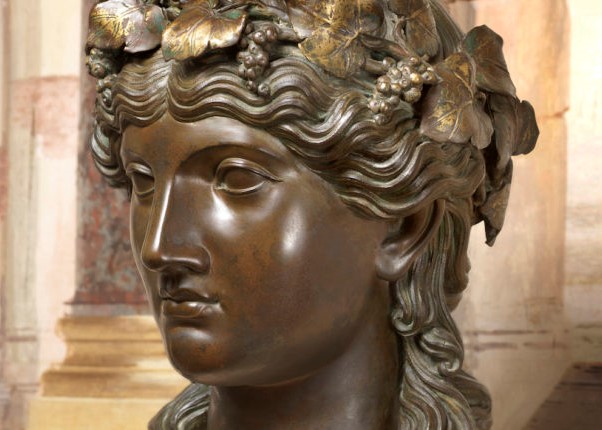
Two important acquisitions made by the Frick Collection in New York concerning the Roman silversmith and sculptor Luigi Valadier, namely the handwritten register containing the description of the works existing in the Valadier workshop compiled in 1810 and a vase in red marble mounted in gilded silver, gave the idea to the director of the Museum, Ian Wardropper, to set up last autumn an exhibition on the famous Roman goldsmith curated by Alvar González-Palacios who is today the best connoisseur of the artist, as evidenced by the large volume that accompanies the exhibition.
The pioneering research of Costantino Bulgari and Teresa Leonor M. Vale has highlighted the primary role of Luigi Valadier in the cultural and artistic context of the Rome of the 18th century: the undisputed destination of artists, connoisseurs and wealthy aristocrats in search of aesthetic emotions and of all those works of art, ancient and modern, that could satisfy their refined encyclopedic tastes.
Like another great craftsman in the field of sumptuous 18th century decorative arts, Luigi Siriès, director of the Manufacture of the Grand Duke of the Pietre Dure, Valadier was also the son of a French goldsmith who, instead of the Florence of the last Medici, chose Rome as the site of his activity. Both had the merit of having updated the late Baroque taste, still widely present in the Italian States around the middle of the 18th century, following the new stylistic canons of international statuary.
In particular, Luigi Valadier was able to masterfully fuse the Baroque scenic inventions within refined Rococo structures that over the years will turn, in line with the changing European taste, in the sumptuous neoclassical works in ancient marble, hard stones, gilded bronzes and enamels. They still live in the sumptuous centerpieces made during the last years of his life, tragically ended with suicide because "poor Valadier, who had so many orders and customers, even popes and kings, was severely indebted".
Looking at the images of the works reproduced in the volume, one can see how Valadier's stylistic path is similar to that of Giovan Battista Piranesi. Not by chance, Gonzalez-Palacios published back in 1975 an essay with the emblematic title “I mani del Piranesi: Valadier, padre e figlio” (Piranesi’s hands: Valdier, father and son”) that had the merit of bringing the attention of art historians back to the development of the Roman decorative arts of the time. At the same time, that flame was kindled driving him over the years to deal with Valadier several times: discovering objects, documents and facts that now find their rightful place in this fundamental volume, atlas of the genius of an artist who managed to range from the creation of a small and precious object to the creation of much more complex furniture and sculptures.
Alvar González-Palacios retraces the fundamental stages of the biography of Luigi Valadier and his family, dividing into various categories the numerous works that have come out of his flourishing workshop, so as to give us an exact catalogue of what we know so far of his activity.
Accompanied by a documentary appendix and by a photographic apparatus laid out alternating the works carried out and numerous preparatory drawings, the publication is a fundamental reference tool for those who wish to deepen the history of the arts in the Rome of the 18th century and in the broader context of European artistic culture.



